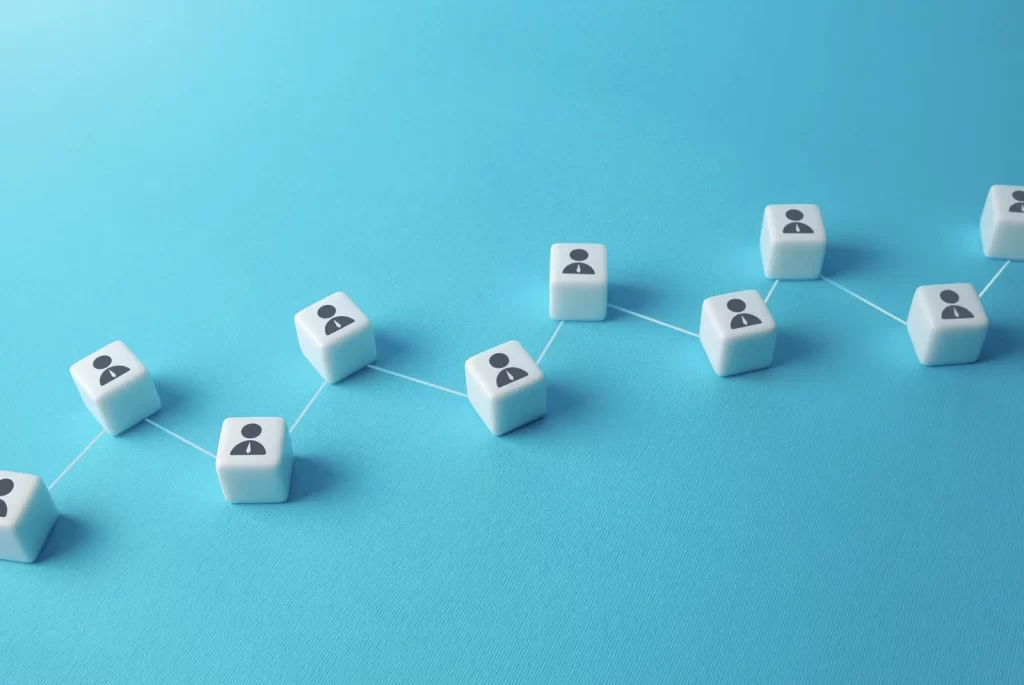Explaining the Difference Between BCC and CC
Introduction – The Email Odyssey
Hello digital navigators and smart marketers! Welcome to the murky depths within your mail client where the mysterious words “BCC” along with “CC” are lurking. These two acronyms might seem insignificant, but they have the power to either make or break the success or failure of your email marketing campaigns. So take a seat and let us begin this fascinating journey as we explain the difference between “BCC” and “CC” – and why they matter! In this thorough guide, we’ll cover every inch of these email strategies, from their origins to their contemporary applications within the realm of online marketing.
Origins of Email
Before we get into the nitty-gritty of it all, we’ll take a walk through the past. Email, which is short for “electronic mail” , has been in existence since the beginning of the internet. It changed the way communication is conducted by making it more efficient as well as more effective. However, with great power comes great responsibility, which is why understanding the intricacies and differences between BCC and CC can play a huge role in email marketing success. In this article we’ll explore the background of email, its evolution over the course of time and the significance of BCC and CC respectively.

The ABCs of CC
Let’s first decode “CC,” which stands for “Carbon Copy“. When you CC a person on your email list, you’re giving them a duplicate copy of another email. The best part? Everybody can see who has been given CC’s. It’s like shouting, “Hey, you’re in the loop!” in a bustling market. Let’s look deeper into the psychology behind CC and its effects on team dynamics and how it can be used to foster collaboration or cause tension in a group.
Uses for Carbon Copy:
- Team Updates: When you need to ensure that everyone is updated and on the same page, a carbon copy strategy is an extremely effective way to keep different departments of a larger team working towards one goal.
- Client Communications: In cases where multiple stakeholders must be aware of the progress of a project, a carbon copy email strategy can be a great ally – being the glue that holds it all together and communicates a clear vision across the board – everyone who needs to know, will know.
- Project Milestones: Celebrating achievements that are the result of a group effort are a breeze when it comes to carbon copy. Togetherness within your team will be skyrocketing once an effective carbon copy strategy is deployed. Assuring that every member of your team is acknowledged for their contributions by being kept up to date with the results of their efforts is guaranteed to motivate and propel them onto the next big project.
The Pros and Cons of CC:
- Pros: Integrity, transparency and accountability.
- Cons: Potential for overload of information – so don’t overshare and keep your message concise and to the point – you don’t want to end up on someone’s spam list!
The Psychology Behind CC:
It’s true that an act as simple as CC’ing someone may be a psychological issue. It can give a feeling of belonging, but it can also cause pressure because everyone is aware of who’s in the process. It’s a tool that could be utilised to promote cooperation, but must be used in a controlled manner to ensure that the recipients are not overwhelmed.
The Hidden World of BCC
Next on the list is the mysterious “BCC,” or “Blind Carbon Copy“. Imagine you’re at a dinner party in a private setting, passing a card to a loved one and not letting anyone else know. This is BCC in the simplest terms! We’ll discuss the ethical implications of the use of BCC as well as how it can be misused, and the reasons why it’s an essential feature in keeping data privacy laws in place like GDPR.
Uses for BCC:
- Newsletters: When you need to ensure the privacy of your mailing list, BCC keeps your club exclusive to a strict guest list, without offending those who didn’t yet receive an invitation.
- Confidential Information: Looking to share information that’s not intended for the public’s consumption? Then BCC is here to help keep a lid on any leaks by keeping your list of recipients strictly exclusive.
The Pros and Cons of BCC:
- Benefits: Privacy data, confidentiality, and privacy security.
- Cons: Lack of transparency and the potential for misuse.
The Psychology Behind BCC:
The use of BCC can be a psychological risk. BCC can give a sense of security for those who have been BCC’d knowing that their data remains confidential. However, abuse of BCC could result in an absence of trust among team members and other people who work for them if they learn that they were not included in communications.

The Great Divide: BCC vs. CC
So, what is the difference between BCC and CC? Here’s a quick comparison:
- Visibility: CC is an unlocked book. BCC is an envelope that is sealed.
- Accountability: CC encourages collective accountability; BCC allows for discreet sharing.
- Security: BCC is your private vault; CC is a bulletin board.
We shouldn’t just stop with an uninspiring comparison. In this article we’ll also discuss cultural differences regarding the use of BCC and CC. For instance, did you realise that the usage of these functions can vary greatly based on the nation or industry you’re working in?
Real-world Scenarios: When and Why to Utilise What?
Let’s get practical! Here are a few scenarios in which the choice among BCC and CC can have a significant impact:
- Team Meetings: Make use of CC to inform everyone about the meeting’s agenda.
- Customer Feedback: Use BCC to solicit reviews, without divulging the identities of other customers.
- Legal Issues: Make sure to use BCC to protect your privacy.
This section will give real-world examples and case studies to show how crucial it is to choose the appropriate feature for the appropriate situation.
Why should you care?
Knowing BCC and CC can be very helpful:
- Respect confidentiality of clients.
- Create a culture of transparent communication.
- Respect data protection laws like GDPR.
But this isn’t all. We’ll also explore the value of employing BCC and CC efficiently. Yes, you read it right! Utilising these tools in the right way can positively impact your bottom line.
The SEO Connection: A Word from More Lead Local
“But what does this have to do with Search Engine Optimisation? How does it relate to SEO at all?!” you might wonder. Here at More Leads Local, we’re focused on synergy. A well-designed email campaign can enhance your SEO strategies by directing more engaged visitors to your optimised web pages. It’s a win-win!
Best Practices for using BCC and CC
Here are a few essential rules to follow:
- Always Double-check: Before hitting send, ensure that you’ve selected the correct option.
- Be Aware: Take note of the impact of your choice for security and privacy.
- Keep Your Site Compliant: Make sure to keep the laws governing data protection in your mind when you use BCC or CC.
Here’s an overview that you can quickly reference to utilise BCC and CC efficiently.
Common Faults to Avoid
- Inappropriately Using CC: Don’t just CC everyone all the time – this can result in an overload of information.
- Making use of BCC: Don’t use BCC to avoid confrontation, or to hide your identity from anyone else.
- Infringing Privacy Laws: Be sure to consider the laws governing data protection when you decide to make use of BCC as well as CC.
The Ethical Considerations
Ethics in email communication is frequently overlooked, yet they are essential. Utilising BCC and CC properly not only complies with the best practices, but also with ethical guidelines. Utilising these tools improperly could lead to ethical issues that could result in breaching the client’s privacy or creating a negative workplace.
Ethics and Moral Guidelines:
- Transparency: Be clear about who’s in your email, particularly when you use CC.
- Confidentiality: Make use of BCC for information that is confidential and should not be made available to everyone.
- Integrity: Be honest and transparent regarding your intentions when you use BCC as well as CC.
The Technical Aspects
What is the process for email servers to handle BCC or CC? Which are their technical restrictions and issues you need to know about? In this section we’ll get geeky and talk about the technical aspects of these capabilities.
In technological aspects related to BCC and CC, there’s much more happening in the background than you’d believe. Email servers use particular protocols and algorithms to manage these features, making sure that messages are delivered to the intended recipients and adhere to security and privacy standards. Let’s get our hands dirty and dive into the specifics.
How email servers handle BCC and CC
- Header information: If emails are sent out, they include header information, which includes specifics like the sender recipient, subject, and much more. For CC the email addresses are listed inside the header which makes them accessible at all times to the recipient. BCC, however, is a different beast entirely; the server will remove BCC recipients from the header prior to sending emails to others, which ensures privacy.
- SMTP Protocol: Simple Mail Transfer Protocol (SMTP) is the preferred method for sending email. When you click ‘send’, the SMTP server will process the email and determine the recipients using the ‘To’, ‘CC’ and the ‘BCC’ fields. For CC the server will send the identical message to all recipients while for BCC the server typically creates separate duplicates of your email to the BCC recipient, removing names from the headers in the process. Now that’s handy!
- Server Load: Handling CC is generally less burdensome on servers because it is sending an identical email message to many recipients. On the contrary, BCC might require the server to mail specific emails to every BCC recipient, which is more resource-intensive, particularly for mailing lists with large amounts of recipients.
Technical Restrictions and Problems
- Spam Filters: Many email servers come with built-in spam filters that block emails with a high amount of BCC recipients as spam. This is an important factor to take into account when sending out mass emails.
- Rate Limitation: Certain email providers have a limit on how many recipients you are able to add to BCC and CC fields to stop spamming. If you exceed these limits, it can cause your email to be shut down or the account suspended temporarily.
- Data Size: The more people you add to your CC list, the bigger the header for your email will become. Although this is usually not as important, it’s something you should think about if you’re sending mail with large files or large numbers of recipients.
- Security Risks: Although BCC provides greater privacy, it’s not completely impervious to hacks. Highly skilled hackers may still be able to hack the server logs and discover BCC’s email addresses, though the risk is low.
The Importance of Encryption
The encryption of emails adds a new layer of complexity. If an email is encrypted, its contents are encoded in a way that makes it impossible to access for anyone without a decryption key. However, the header information which includes those on the CC listing, are typically not encrypted – which can be a security risk; but since BCC addresses are omitted from their header, they provide additional security when sending encrypted emails.
Knowing the technicalities that go into BCC and CC isn’t only for tech-savvy people and is essential for everyone who utilises email for business or personal communications. Understanding how email servers handle these functions can aid you in using them efficiently and avoid common mistakes.
The next time you press ‘send’, you’ll be able to have an entirely new appreciation for the intricate technical procedures that allow it to be done. That dear readers, is the appeal of delving into the technical details of seemingly straightforward things.

The Legal Implications
Recognising Legal Effects
- Consent: Always seek explicit permission before sharing an individual’s email address in the CC field, particularly when dealing with EU citizens or sensitive data.
- Confidentiality: When it comes to sensitive data, BCC is generally the most secure option since it conceals the details of addresses for email of recipients.
Mitigating Risks
- Awareness: Inform your team on the legal implications of the use of BCC as well as CC.
- Policy: Implement a comprehensive company-wide email policy that defines the proper use of BCC and CC while taking legal considerations into account.
- Encryption: Utilise encrypted email services to provide an additional layer of security, particularly in the case of sensitive data.
Stay informed – Stay compliant!
Historical Context: A Deeper Understanding
The words “Carbon Copy” and “Blind Carbon Copy” hark back to an earlier time when carbon paper and typewriters were commonplace. Carbon paper is a piece of paper covered with an ink layer ink which could be transferred onto a blank paper when it was pressed, like from a key for a typewriter. This produced an exact “copy” to the source document. This is why it’s the title “Carbon copy.”
“Blind” in “Blind Carbon Copy. “Blind” that is used in “Blind Carbon Copy” means that the copy is not visible to the user. In the past you could make a carbon copy and not let the recipient who is in charge of it just like BCC operates in today’s email.
Understanding the history behind these origins could give a deeper gratitude for the progress we’ve made with regards to technology as well as highlighting the constant need for openness (CC) as well as privacy (BCC) in the field of communications.
If you CC or BCC someone you’ll be participating in a tradition with roots dating back a few decades, if not centuries. A piece of history with every click!
Conclusion: The Last Word
There we are, Folks! It’s the universe of BCC and CC that has been re-defined. It’s not about just pressing “send” – it’s about delivering the correct message to the right people, in a proper method. So, go out with this thorough guide and make your email messages more efficient than ever before!
For more SEO magic – the web wizards at More Leads Local have got you covered!
